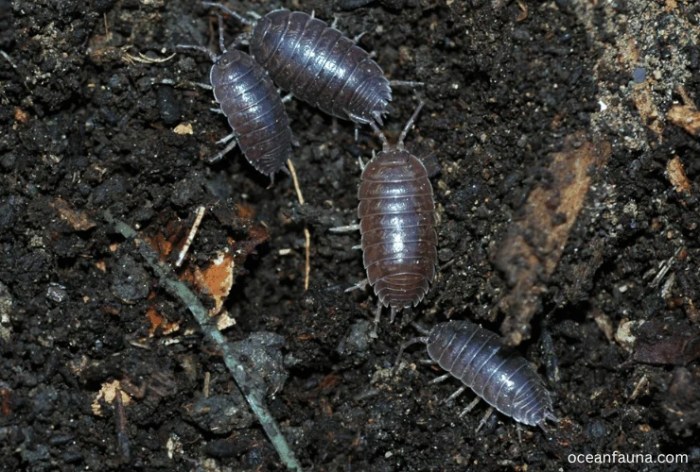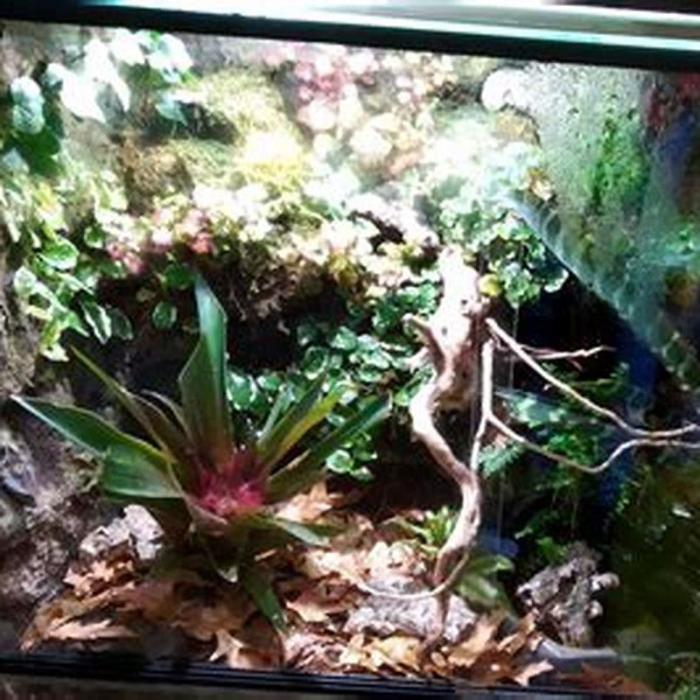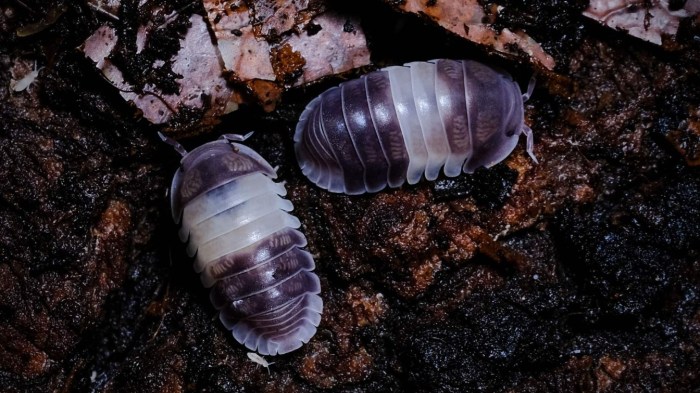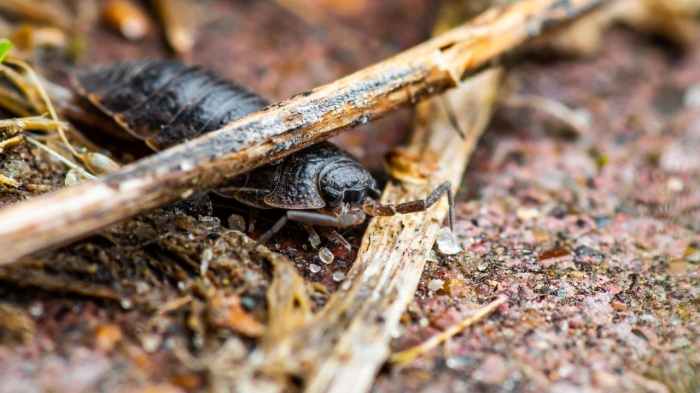How do isopods locate appropriate environments? This question delves into the fascinating sensory adaptations, environmental preferences, and behavioral strategies employed by these crustaceans to thrive in diverse habitats. Join us as we unravel the intricate mechanisms that guide isopods in their search for optimal living conditions.
From the specialized sensory structures they possess to the specific environmental factors they seek, we will explore the remarkable abilities of isopods to locate and establish themselves in suitable environments. Their ability to detect and respond to environmental cues is crucial for their survival and reproduction, shaping their distribution and ecological roles.
Sensory Adaptations

Isopods possess specialized sensory structures that enable them to detect environmental cues and locate suitable environments. Their antennae are highly sensitive and covered in chemoreceptors, allowing them to perceive chemical signals in the air and water. Additionally, isopods have tactile receptors on their legs and body, enabling them to sense physical stimuli such as changes in temperature and humidity.
Chemoreception
Isopods use chemoreceptors located on their antennae and other body parts to detect chemical cues in their environment. These receptors can identify various substances, including food sources, mates, and potential predators. By following chemical trails, isopods can navigate towards favorable habitats and avoid dangerous areas.
Tactile Sensing
Isopods have tactile receptors on their legs and body that allow them to sense physical stimuli. These receptors are sensitive to changes in temperature, humidity, and substrate texture. Isopods use tactile sensing to assess the suitability of their environment and locate areas that provide optimal conditions for survival and reproduction.
Environmental Preferences

Isopods exhibit distinct preferences for specific environmental factors, such as moisture, temperature, and food availability. These preferences vary among species, but generally, isopods seek out environments that provide optimal conditions for their survival and reproduction.
Moisture
Isopods are highly sensitive to moisture levels and require humid environments to prevent desiccation. They actively seek out areas with high humidity, such as under rocks, logs, and leaf litter. In dry environments, isopods may aggregate in sheltered areas or burrow underground to conserve water.
Temperature
Isopods have a preferred temperature range that varies among species. Most isopods prefer moderate temperatures, but some species can tolerate extreme cold or heat. Isopods often seek out microhabitats that provide optimal temperatures, such as under rocks or in shaded areas.
Food Availability
Food availability is a crucial factor in isopod habitat selection. Isopods are opportunistic scavengers that feed on a wide range of organic matter. They prefer environments with abundant food sources, such as decaying plant material, animal carcasses, and fungi.
Behavioral Strategies: How Do Isopods Locate Appropriate Environments

Isopods exhibit various behavioral strategies to locate appropriate environments. These strategies include movement patterns, aggregation, and habitat selection.
Movement Patterns, How do isopods locate appropriate environments
Isopods are generally slow-moving animals, but they can actively search for suitable environments when necessary. They use their antennae to detect environmental cues and follow chemical trails towards favorable habitats. Some isopods exhibit a random movement pattern, while others follow a more directed path.
Aggregation
Isopods often aggregate in areas that provide optimal conditions for survival and reproduction. These aggregations may be temporary or permanent and can range in size from a few individuals to hundreds or thousands. Aggregation provides isopods with protection from predators, access to food, and a favorable microclimate.
Habitat Selection
Isopods actively select habitats that meet their specific environmental requirements. They consider factors such as moisture, temperature, food availability, and shelter when choosing a habitat. Isopods may switch habitats seasonally or in response to changes in environmental conditions.
Species Variations

Different isopod species have specialized adaptations or preferences for specific environments. These variations enable different species to occupy diverse habitats, from terrestrial to aquatic environments.
Terrestrial Isopods
Terrestrial isopods, such as woodlice, prefer humid environments with abundant decaying plant matter. They are often found under rocks, logs, and leaf litter in forests and other terrestrial habitats. Some terrestrial isopods have evolved adaptations for arid environments, such as the ability to store water and tolerate extreme temperatures.
Aquatic Isopods
Aquatic isopods, such as sea slaters, are adapted to live in marine or freshwater environments. They have gills for respiration and can tolerate varying levels of salinity. Aquatic isopods are found in a wide range of habitats, including intertidal zones, seagrass beds, and deep-sea environments.
Importance of Environmental Suitability
The ability of isopods to locate appropriate environments is crucial for their survival and reproduction. Suitable environments provide isopods with the necessary resources, such as food, moisture, and shelter, to thrive and reproduce successfully.
Survival
Isopods are sensitive to environmental conditions, and unsuitable environments can lead to mortality. By locating appropriate environments, isopods increase their chances of survival by accessing essential resources and avoiding harsh conditions.
Reproduction
Suitable environments provide isopods with the conditions necessary for successful reproduction. Factors such as moisture, temperature, and food availability influence the reproductive success of isopods. By locating appropriate environments, isopods can ensure the survival and development of their offspring.
User Queries
What are the key sensory structures used by isopods to detect environmental cues?
Isopods rely on a range of sensory structures, including antennae, chemoreceptors, and mechanoreceptors, to detect environmental cues such as moisture, temperature, and food availability.
How do environmental preferences vary among different isopod species?
Different isopod species exhibit specialized adaptations and preferences for specific environmental conditions, enabling them to occupy diverse habitats, from freshwater streams to marine environments.
What is the significance of isopods’ ability to locate appropriate environments for their survival?
The ability of isopods to locate suitable environments is crucial for their survival and reproduction, as it ensures access to essential resources such as food, shelter, and mates.